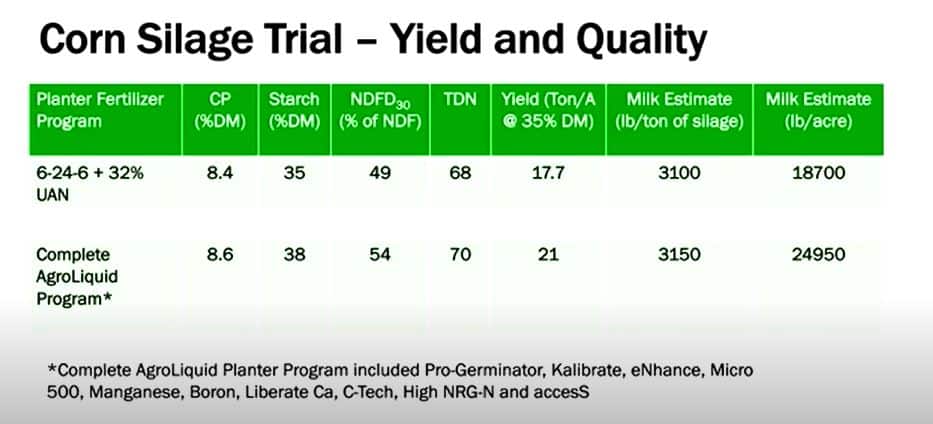Producers already know good crop nutrition impacts the quality and yield of forage crops, particularly corn silage. But when it comes to creating a nutritional plan and deciding what to purchase, it’s nice to have science on your side.
 Why forage quality matters
Why forage quality matters
Forage crops, especially grasses, alfalfa, and corn silage, are important for ruminant livestock nutrition. They provide essential nutrients like energy, protein, and fiber. The specific amount and type of forage animals need depend on the species of livestock and growth stage. However, high-quality, nutrient-dense forage benefits most, if not all, ruminant animals.
Characteristics of high-quality forage
What makes forage high quality for livestock? Simply put, high-quality forage is highly digestible and contains high levels of starch and protein. These characteristics translate to nutrient-dense forage that meets the needs of your livestock. While many factors determine forage quality, a few key metrics are helpful to analyze:
• Starch
• Crude protein
• NDF digestibility (NDFD)
These characteristics represent the portion of the forage that livestock can use, and the higher value of these components are the ones that are more desired.
The link between crop nutrition and forage quality
Liebig’s Law of the Minimum states that if even one essential plant nutrient is deficient, plant growth will be limited, even if all other essential nutrients are abundant. This principle applies not only to plant growth but also to forage quality. Proper crop nutrition directly influences the quality of forages, which in turn, influences milk production.
Study: how crop nutrition boosts milk production
This table shows the results of a corn silage project conducted in New York where a basic program of a 6246 planter fertilizer plus 32 percent UAN liquid nitrogen was compared to a complete AgroLiquid crop nutrition program that included phosphorus potassium, sulfur, micronutrients, high energy sources, and nitrogen. All of the other parts of the silage production system were the same for both treatments.
The data shows that a complete crop nutrition program improved through protein, starch, and NDF digestibility, compared to the basic 6246 program.
Those quality factors were entered into a milk production model called Milk 2006 from the University of Wisconsin. The estimated milk production for a ton of silage receiving the complete program was 50 pounds higher than silage receiving the basic program.
The higher milk production per ton of forage, along with the increased silage yield, caused an estimated milk production per acre to increase over 6250 pounds of milk per acre with the complete nutrition program, compared to the basic program.
This demonstrates how a comprehensive crop nutrition program can significantly improve both forage yield and quality.
Benefits of a balanced feed ration with high-quality silage
A balanced feed ration that incorporates high-quality silage leads to several advantages:
• Increased milk production per ton of feed
• Reduced need for additional grain or purchased inputs
• Healthier livestock
• More cost-effective milk production
• Higher overall milk production profitability
Additional resources
For more information, visit our research resources:
Alfalfa and milk yield study
Potassium and forage quality
Agronomic Advisor Focus: Forage Crop Nutrition – Watch as John Leif, Regional Sales Agronomist, discusses forage crops and its effect on ruminants.
Embrace the science! Explore what AgroLiquid products have to offer for you, your business, and your livestock.
Contact Us
If you have any questions about crop nutrition or how it can improve your forage quality, please contact an AgroLiquid representative or visit agroliquid.com.


